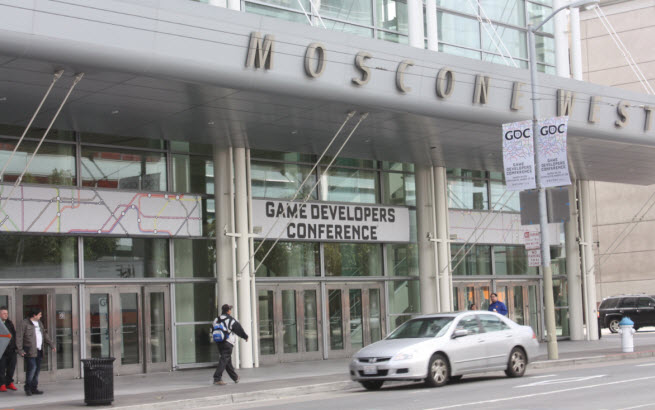The 2013 Game Developers Conference drew more than 23,000 attendees, matching the number of attendees from a year ago despite a huge amount of turmoil in the video game industry. About half of those attendees are indie game developers, making up for a lot of the attendees who may have dropped out because they lost jobs at traditional game companies.
[aditude-amp id="flyingcarpet" targeting='{"env":"staging","page_type":"article","post_id":708858,"post_type":"story","post_chan":"none","tags":null,"ai":false,"category":"none","all_categories":"games,","session":"B"}']UBM Tech Game Network, which owns the GDC, said that next year’s event will be held at the Moscone Convention Center in San Francisco from March 17 to March 21.
At the Game Narrative Summit, Microsoft senior game designer Richard Rouse III talked about the ways developers can write games with a solid foundation of morality and engagement. In the Free to Play Design & Business Summit, King.com’s Tommy Plam talked about the strategy that enabled the company to turn Candy Crush Saga into a hit on both Facebook and mobile.
The main conference started on Wednesay and featured the final edition of The Game Design Challenge. Under the theme “Humanity’s Last Game,” indie game designer Jason Rohrer won the competition with his proposal for a game. The title, A Game for Someone, is a board game locked away in a titanium tube and buried under the Nevada desert. Attendees at the session were given a unique sheet of paper in an envelope, with each paper listing 900 different global positioning system coordinates. Only one of the coordinates in the envelopes had the true location of the game. Rohrer estimated that if one person visits a GPS location each day with a metal detector, searching for the titanium tube, the game would be unearthed in a million days.
A controversial party sponsored by the International Game Developers Association and YetiZen made headlines, since the party had female dancers in racy garb. It prompted resignations from the IGDA and an official apology from the IGDA’s executive director. Another session tackled the scapegoating of the game industry in game violence debates, and still another focused on sexism in games.
Among the gaming companies making announcements about new systems were Oculus Rift, PlayJam’s GameStick, Ouya, and Sony, which described its PlayStation 4 next-gen console in a session.
In the classic game postmortem series, veteran game developers talked about how they created their games. The series included Franz Lanziger discussing Crystal Castles; Robyn Miller talking about the creation of Myst; Bill Budge lecturing about his inspirational Pinball Construction Set; and Julian Gollop talking about the origins of X-COM: UFO Defense.
[aditude-amp id="medium1" targeting='{"env":"staging","page_type":"article","post_id":708858,"post_type":"story","post_chan":"none","tags":null,"ai":false,"category":"none","all_categories":"games,","session":"B"}']
Sessions will be available for viewing on the GDC Vault. Be on the lookout for more GamesBeat coverage.
“With the game development industry evolving at a faster clip than ever before, we find both the profile of the developer and the types of games represented at GDC also growing to include new and different people and interests,” said Meggan Scavio, general manager of the GDC, in a statement. “The response we’ve gotten to this year’s event makes us feel confident that the changes we’ve made, such as the introduction of the Advocacy Track and the Free to Play Game Design and Business Summit, have helped evolved the conference to be even more inclusive. We are thrilled to continue to be a place where members of the profession can connect, discuss and showcase, and look forward to continuing the tradition in upcoming events.”

